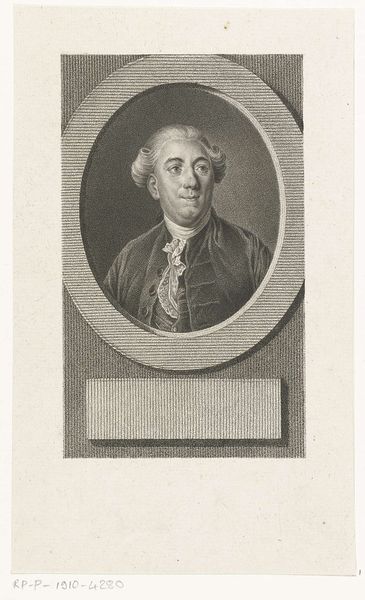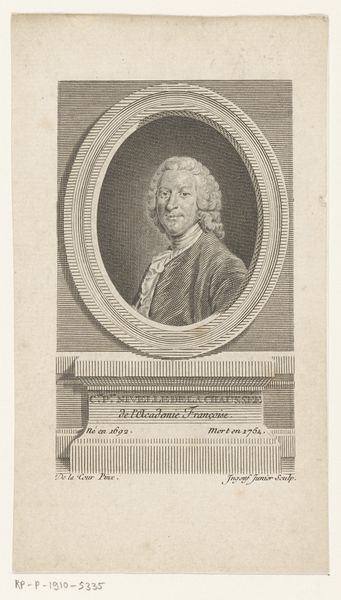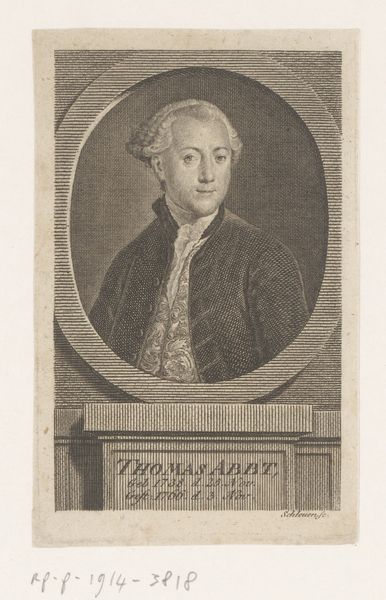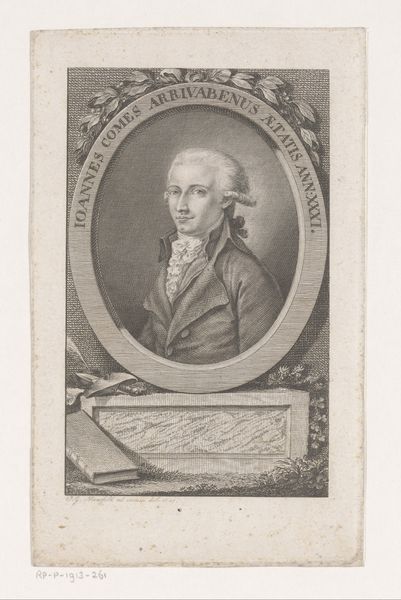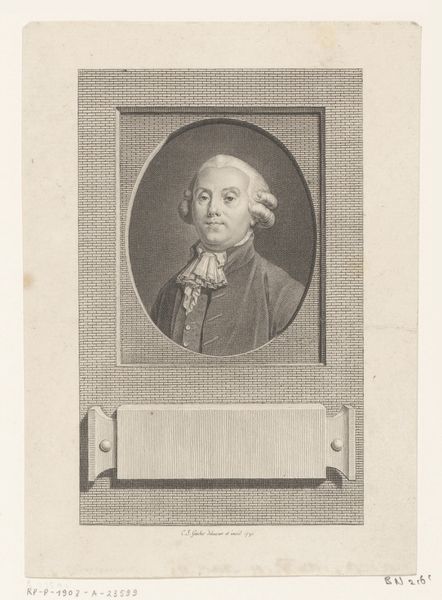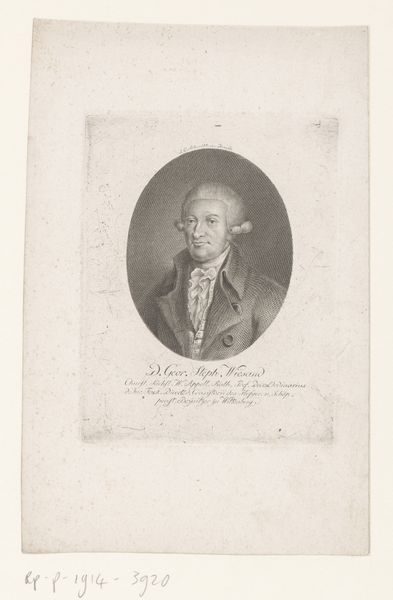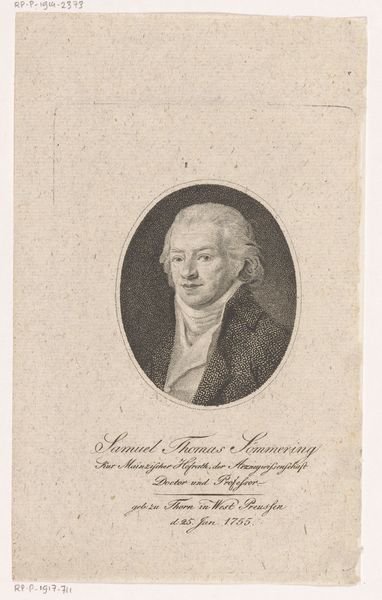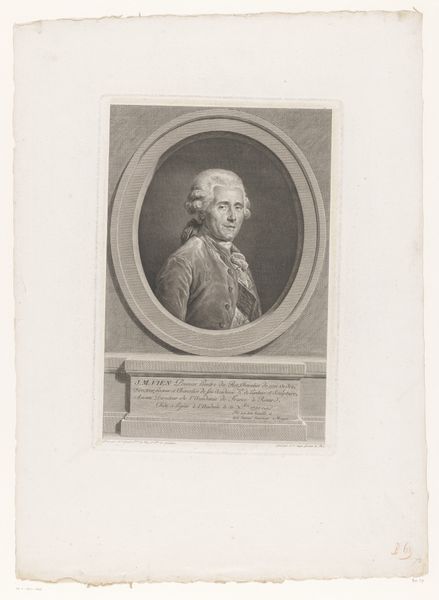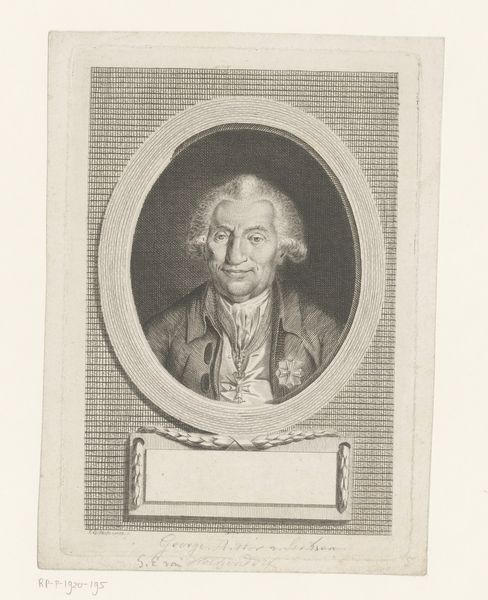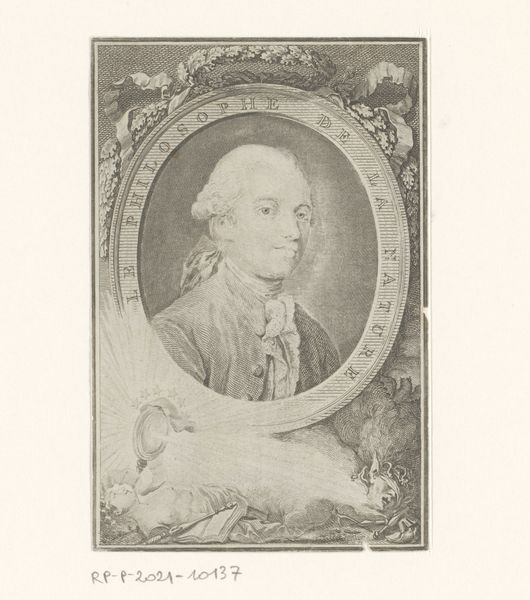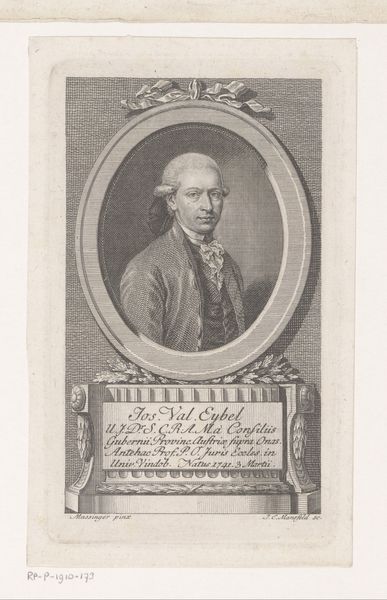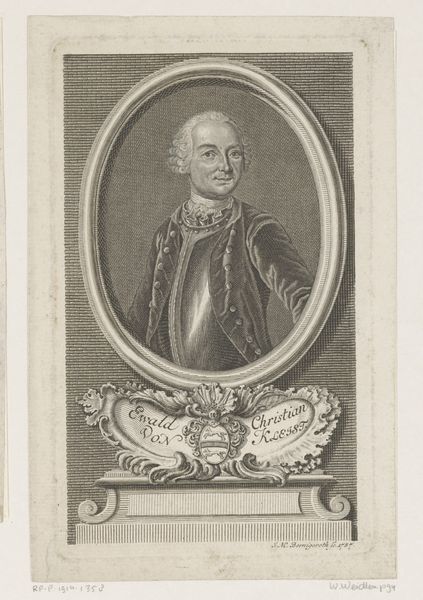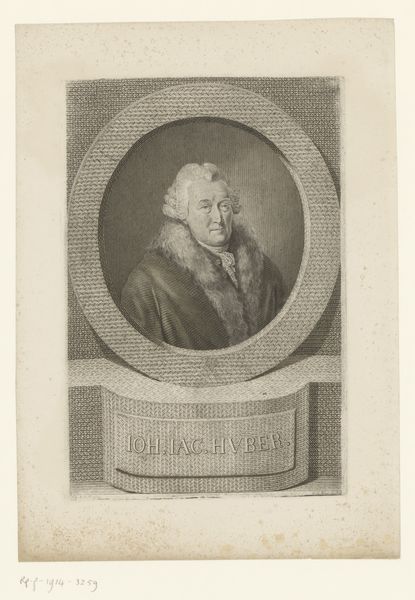
Dimensions: height 165 mm, width 92 mm
Copyright: Rijks Museum: Open Domain
Editor: So, here we have a print, a portrait of Johann Gottfried Eichhorn, dating somewhere between 1760 and 1839, made by J.K. Mayr. It has a formal, almost austere quality to it. What’s your take on this portrait? Curator: I’m particularly drawn to the engraving itself. Consider the labor involved: the engraver meticulously cutting lines into a metal plate, then inking and printing. It’s a process deeply rooted in material and skill, isn't it? It reminds us that art isn't just about the image, but also about the means of production and consumption. Editor: Absolutely, I see that. But beyond the technical, what does the choice of this medium say about the subject, Eichhorn? Curator: Well, prints allowed for wider circulation of images and ideas. Eichhorn, being a scholar, likely benefited from this. The portrait then becomes a tool – a material object used to construct and disseminate his public image, his intellectual labor. Was he commissioning this to boost his popularity perhaps? Editor: Interesting thought. I was more focused on the surface-level, like the style, but the materials perspective shifts the whole context. It also makes me consider how much more accessible prints like these would have been, compared to painted portraits. Curator: Precisely. This democratizing aspect is key. While an oil painting remained in the hands of the wealthy, prints could reach a wider audience, impacting the reception and spread of knowledge. This accessibility changes the role of art within society. Editor: I hadn’t thought about that at all. Looking at the print now, I see it less as just a portrait, and more as evidence of artistic labour within a wider social and intellectual network. Curator: Exactly! The portrait is then much more than an image; it is a commodity. Editor: Well, that certainly offers a new perspective to consider when viewing this artwork. Thanks!
Comments
No comments
Be the first to comment and join the conversation on the ultimate creative platform.
